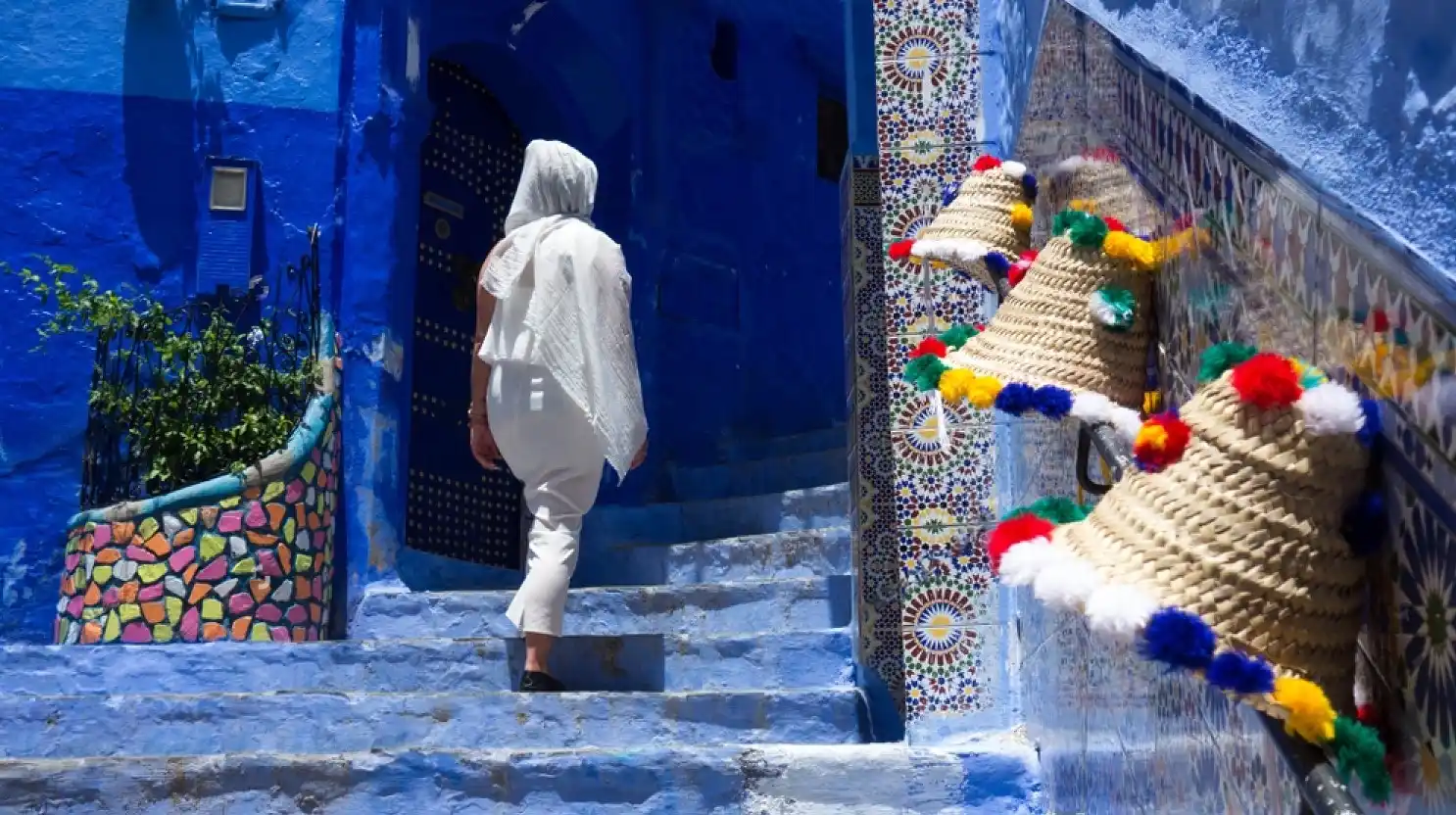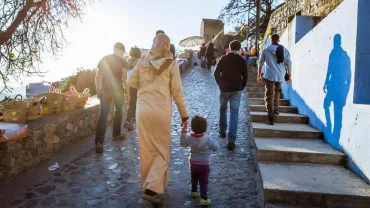What to wear in Morocco in April is one of the important queries of the tourists who plan to go to Morocco in this month. This country is known for its rich cultural heritage, and its traditional clothing reflects the country’s diverse history and influences. When visiting Morocco in April, it’s important to pack clothing that is both comfortable and appropriate for the weather and cultural norms. The temperatures in April are generally quite pleasant, with highs in the mid-70s to low 80s Fahrenheit (24-28 degrees Celsius) and lows in the mid-50s to low 60s Fahrenheit (12-17 degrees Celsius). However, it can still be quite cool in the evenings, especially in the desert or mountainous regions, so it’s a good idea to bring a light sweater or jacket.
As for what to wear in Morocco in April, it’s best to dress in layers so you can easily adjust to the varying temperatures throughout the day. Loose-fitting pants or skirts and lightweight tops are recommended, as they will keep you cool during the day and can be easily layered with a sweater or jacket for the cooler evenings. Avoid tight-fitting clothing and shorts, as these can be considered inappropriate in more traditional areas of the country.
Here are some examples of traditional clothing worn in different parts of Morocco in April

Djellaba: A unisex, loose-fitting, hooded garment that is often worn by men and women in the cities and towns of Morocco. It’s made of wool or cotton and is typically worn over a traditional undershirt and pants. As for what to wear in Morocco in April, Caftan: A long, flowing garment that is typically worn by women. It’s made of silk or other fine fabrics and is often adorned with intricate embroidery or beadwork.
Berber: A traditional clothing worn by Berber ethnic group in Morocco. It’s made of wool or cotton and is typically worn with a headscarf. Fez: A traditional headwear worn by men in Morocco, it’s a red felt hat with a black tassel, typically worn with a djellaba or other traditional clothing.
Henna: A traditional body art worn by women, it’s a temporary tattoos made from a paste made from the crushed leaves of the henna plant. Tagine: A traditional clay pot used to cook stews and other dishes, often used as an accessory in traditional clothing.
What to wear in Morocco in April as Modest Clothing?
As Morocco is a Muslim country, when you visit Morocco so it’s important to dress modestly and respect local customs and traditions. This means covering your shoulders and knees when visiting religious sites or more traditional areas, such as the medina (old city) in Marrakech or the souks (markets) in Fez. Women should consider bringing a scarf or shawl to cover their hair if they plan to visit mosques or other holy sites.
In addition to modest clothing, it’s also a good idea to bring comfortable shoes for walking, as many of the cities and towns in Morocco have narrow, winding streets and uneven pavement. A pair of sneakers or closed-toe shoes with good traction will help you navigate the streets with ease.
Important Accessories to wear in Morocco in April
Another important item to pack is sunscreen and a hat, as the sun can be quite strong in Morocco, especially in the desert regions. Sunglasses and a refillable water bottle are also essential for staying hydrated and protecting your eyes from the glare of the sun.
Finally, it’s a good idea to bring a small, lightweight bag or purse for carrying your essentials while exploring the markets and streets. Avoid carrying anything valuable or unnecessary items, as pickpocketing can be a problem in some areas.
Overall, when visiting Morocco in April, it’s important to pack clothing that is both comfortable and appropriate for the weather and cultural norms. Modest, comfortable clothing and comfortable shoes are essential, as well as items like sunscreen, a hat, sunglasses, and a refillable water bottle to protect yourself from the sun.
Unique dressing that women should wear in Morocco in April

When it comes to fashion in Morocco, it’s important for women to dress properly and respect local customs and traditions. In April, the weather is generally quite pleasant, but it can still be quite cool in the evenings, especially in the desert or mountainous regions. So, it’s a good idea to pack clothing that is both comfortable and appropriate for the weather.
What women should wear in Morocco in April?
Dress in layers: Pack clothing that can be easily layered, such as loose-fitting pants or skirts and lightweight tops. This will help you adjust to the varying temperatures throughout the day. Avoid tight-fitting clothing, such as tight jeans or leggings, can be considered inappropriate in more traditional areas of the country. It’s best to opt for looser, more flowing clothing.
Cover your shoulders and knees: When visiting religious sites or more traditional areas, such as the Medina (old city) in Marrakech or the souks (markets) in Fez, it’s important to cover your shoulders and knees. Many women in Morocco cover their hair when visiting mosques or other holy sites. It’s a good idea to bring a scarf or shawl that you can use to cover your hair if needed.
Opt for comfortable shoes: Many of the cities and towns in Morocco have narrow, winding streets and uneven pavement, so it’s essential to pack comfortable shoes for walking. A pair of sneakers or closed-toe shoes with good traction will help you navigate the streets with ease. It’s a good idea to bring a small, lightweight bag or purse for carrying your essentials while exploring the markets and streets.
Be mindful of the color: Bright colors are often associated with celebrations and special occasions, so it’s best to avoid wearing bright colors in more traditional areas. Stick to neutral or subdued colors such as beige, brown, grey, and navy. Avoid fabrics that are too revealing such as silk or satin, opt for more breathable and light fabrics such as cotton and linen.
What men should wear in Morocco in April?
“Discover the perfect blend of comfort and tradition with our men’s fashion guide for April in Morocco. From the bustling cities to the rolling desert dunes, make a lasting impression with a wardrobe that’s both practical and respectful of the local culture.
Layer up with lightweight shirts, sweaters, and jackets for the perfect balance of warmth and style.
Opt for comfortable, closed-toe shoes that can handle the winding streets and uneven pavement of Morocco’s cities. Avoid wearing shorts and tank tops and cover your shoulders to show respect for local traditions.
Beige, brown, grey, and navy are good choices for neutral hues that will fit in with the classic surroundings. Be aware of the clothing you choose to wear; stay away from exposing fabrics like silk or satin and use breathable, lightweight materials like cotton and linen instead. Avoid showing too much skin and always be aware of the cultural norms.





Comment (0)